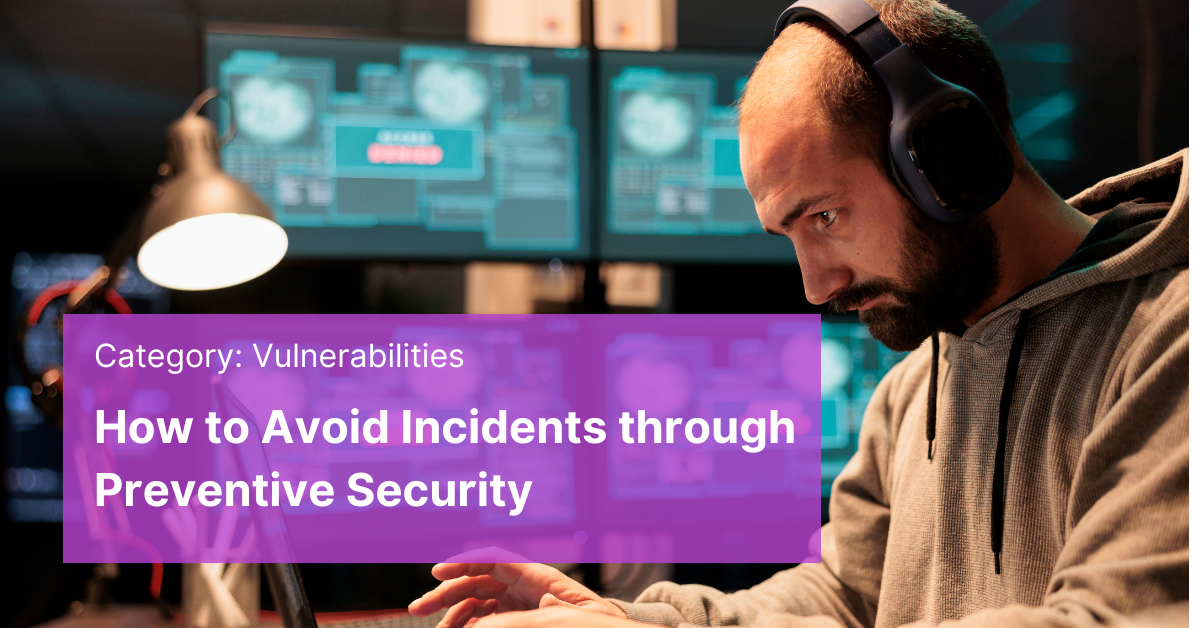Incident prevention is an essential component of any organization’s cybersecurity strategy. By taking proactive steps to prevent security incidents from occurring, organizations can better protect themselves against the risks and consequences of data breaches, cyber-attacks, and other security incidents. Here are some key steps that organizations can take to avoid incidents through preventive security:
- Conduct a security assessment: The first step in incident prevention is to understand the current state of your organization’s security posture. This includes identifying potential vulnerabilities and weaknesses in your systems, networks, and processes. A security assessment can help you to identify these vulnerabilities and prioritize the necessary steps to address them.
- Implement security controls: Once you have identified the vulnerabilities in your organization’s security posture, the next step is to implement the necessary security controls to address them. This may include installing firewalls, intrusion detection and prevention systems, and other security measures. It may also involve implementing security policies and procedures to ensure that all employees are following best practices for security.
- Monitor your systems: Continuous monitoring of your systems and networks is essential for incident prevention. By monitoring for anomalies and potential threats, you can identify potential security incidents before they occur and take the necessary steps to prevent them. This may involve using security tools such as network scanners and intrusion detection systems to monitor your systems in real time.
- Keep your software up-to-date: Software vulnerabilities are a common entry point for cybercriminals. By keeping your software up-to-date, you can ensure that you have the latest security patches and updates to protect against known vulnerabilities. This includes not only operating system updates but also updates for applications and other software.
- Educate your employees: Your employees are an important line of defense against security incidents. By educating them about the importance of cybersecurity and teaching them best practices for security, you can reduce the risk of incidents caused by human error. This may involve providing training on topics such as password management, email security, and phishing attacks.
- Conduct regular security drills and testing: Regular security drills and testing can help you to identify and address potential vulnerabilities and weaknesses in your organization’s security posture. This may involve conducting penetration testing to simulate cyber attacks and identify vulnerabilities, or conducting mock data breaches to test your incident response plan. By conducting these drills and testing regularly, you can identify and address potential weaknesses in your security posture before they can be exploited by cybercriminals.
- Establish incident response protocols: Having a well-defined incident response plan in place is crucial for preventing and responding to security incidents. This plan should outline the steps to be taken in the event of an incident, including who is responsible for responding, how to communicate with stakeholders, and how to restore normal operations as quickly as possible. By establishing incident response protocols ahead of time, you can ensure that you are prepared to handle a security incident effectively.
- Use security tools and services: There is a wide range of security tools and services available to help organizations prevent and respond to security incidents. These may include intrusion detection and prevention systems, security information and event management (SIEM) systems, and threat intelligence platforms. By using these tools and services, you can gain real-time visibility into potential threats and take the necessary steps to prevent them.
In conclusion, incident prevention is an essential part of any organization’s cybersecurity strategy. By taking proactive steps to prevent security incidents from occurring, you can better protect your organization against the risks and consequences of data breaches, cyber-attacks, and other security incidents. This may involve conducting security assessments, implementing security controls, monitoring your systems, keeping your software up-to-date, educating your employees, conducting regular security drills and testing, establishing incident response protocols, and using security tools and services. By following these best practices for incident prevention, you can significantly reduce the risk of security incidents and protect your organization against potential threats.
At Cynergy, we have created a next-generation of external attack surface platform that reduces false positives by validating the accuracy and connection to the organization at hand. To avoid biased judgment and adding our supervised AI model, when needed to provide quality data for training, this way we keep our clients safe and prevent a potential breach.






